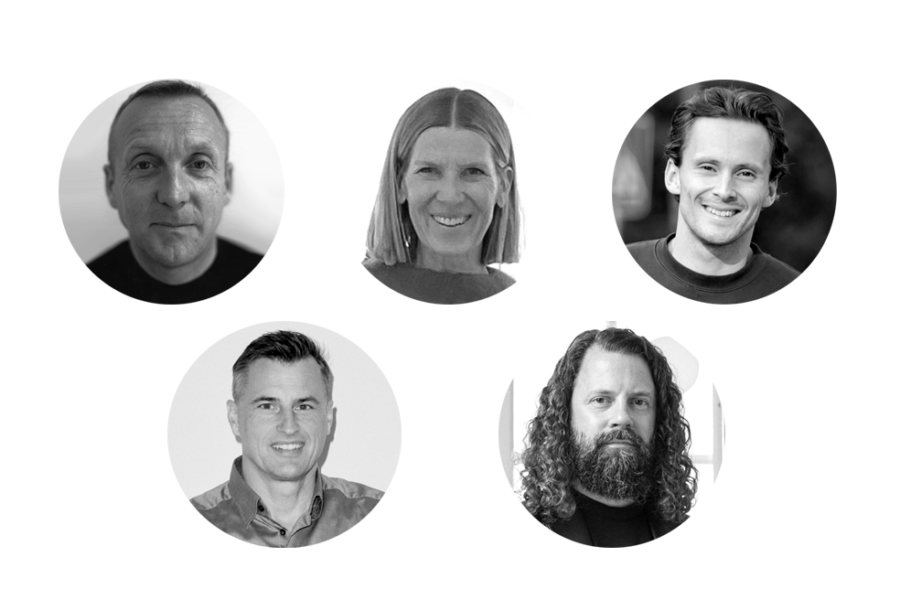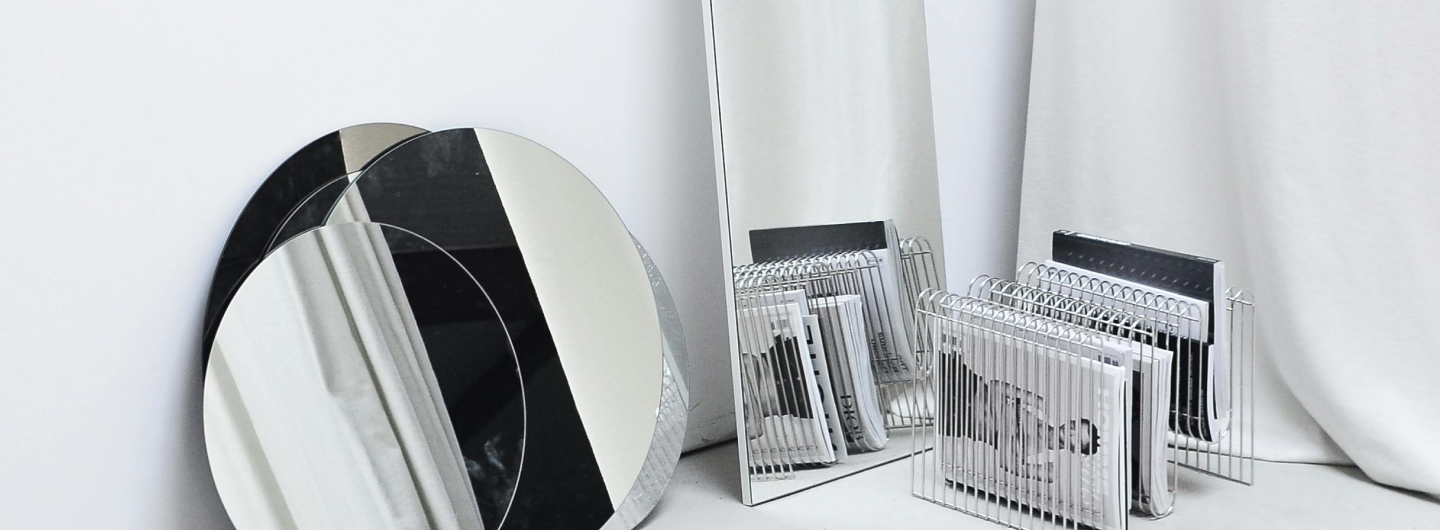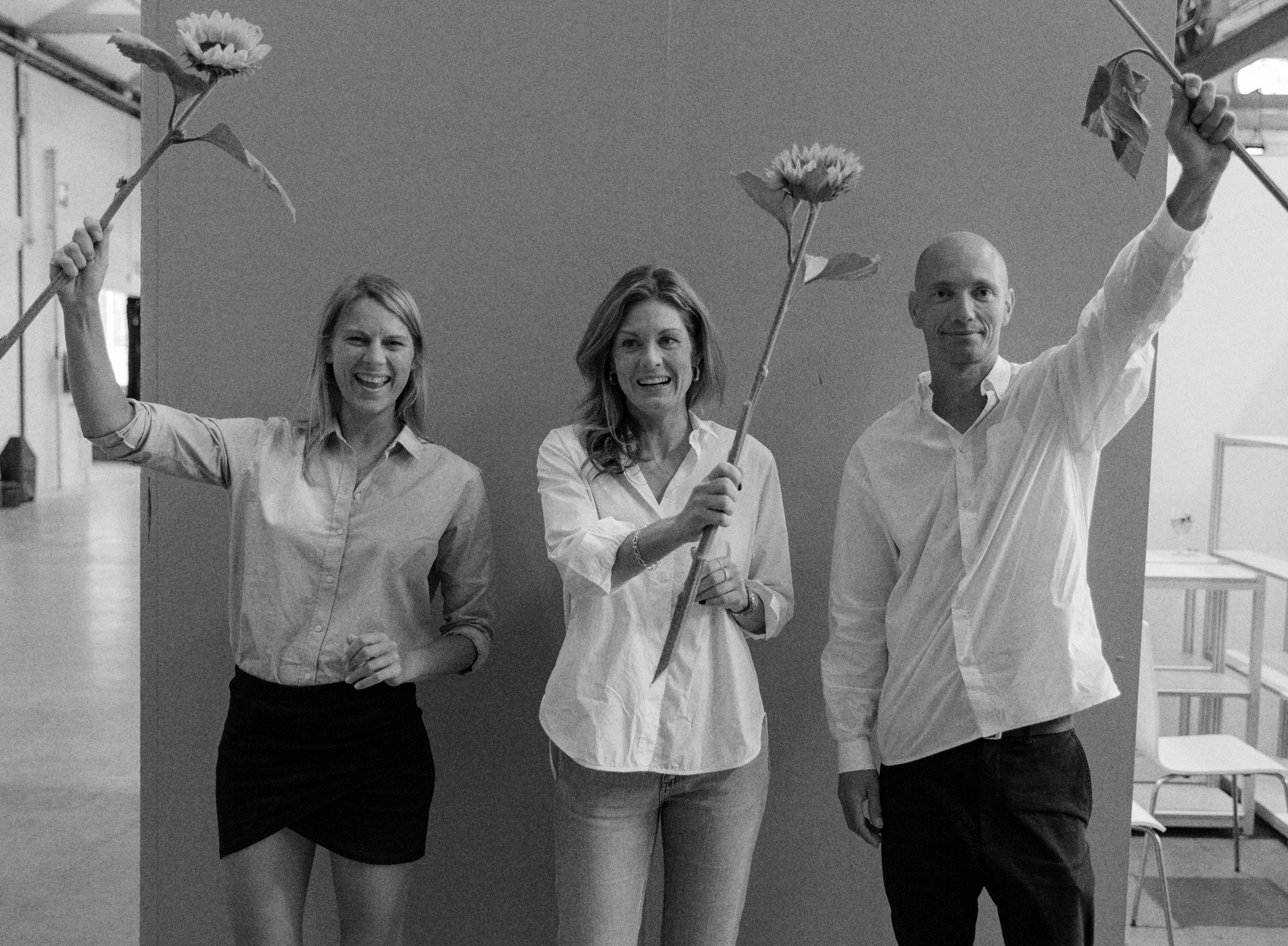
Leading experts in the industry give their predictions for 2023
We speak to a trend forecaster, distributor, sales manager, strategist, and designer on what to expect for the year to come.
Henrik Mattsson has worked with trend forecasting for 45 years. Anneli Jacobsson runs A.J S.H.O.E.S (a Scandinavian distributor of Italian shoe brands MJUS and A.S.98 and Spanish brand VERBENAS) and designs and distributes her own shoe brand, ALBERVILLE, in Scandinavia and Germany. As the Regional Sales Manager for the Stockholm-Mälardalen area at Swedish shoe brand Icebug, PhilipKarlsson is responsible for staff education, sales-through in retail channels and, as he puts it, selling the right product to the right customer in the most sustainable way possible. Niclas Andersson is the CEO of Lynxeye, a management consultancy working with how companies are dealing with the larger paradigm shifts that many industries are facing by understanding the broader future landscape, consumers, and partners, as well as the competitive space. Since August 2020, Neil Lewty has been Head of Design at J.Lindeberg.
How was your 2022?
Henrik Mattsson, Bloc: My 2022 has been very much as normal as it can be. The positive thing is that it has been relatively normal – it is a little bit more slow but still normal.
Anneli Jacobsson, A.J S.H.O.E.S: It’s been OK, considering the two previous years of pandemic. We have sold more pre-sale but less orders in season – during the pandemic it was the opposite. The energy crisis is challenging, both when it comes to the costs for the factories and raw materials and also the fact that people tend to spend less. Another big impact on the shoe business is the weather. Our clients were happy with the sales in spring and summer but the autumn was too warm and the sales of boots did not take off as expected, so the sales period started with discounts everywhere. It’s been a tough year for our clients. Everyone was hoping that 2022 would be much better than during the pandemic but the sales for the shoe business is about 20% less than in 2019. A lot of shops have closed.
Niclas Andersson, Lynxeye: It has been very rewarding, both privately and professionally. On a macro level, we do of course have a very challenging situation with years of declining respect for true democracy in many regions and a war in Europe that is beyond comprehension. However, in parallel, we see a large part of the public demanding action from corporates to step up and help change the situation for the better. And many corporations respond by rethinking their mission in a more purposeful direction. I think this is very promising.
Philip Karlsson, Icebug: It’s been good despite the current situation and the circumstances, it feels great to have been through the pandemic and be able to see our customers again. Thanks to that, they can make more strategic purchases and we can also strengthen our partnerships. The most challenging part? The current situation in the world with a war in Europe with all the uncertainty for stores and suppliers.
Neil Lewty, J.Lindeberg: Many challenges – no need to state the obvious. We have had a positive year despite the strong headwinds, recording our best results in the company’s history. We have faced difficulties with our raw materials and garment deliveries but luckily, we have been agile enough to keep this to a workable level.
What are your anticipations for this year?
Henrik Mattsson, Bloc: 2023 looks a bit more challenging and will probably be filled with revelations that will upheave and disturbing reality and normality. The inflation, the level of the interest rent, and the war make the world uncertain and hard to predict. So, be cautious!
Anneli Jacobsson, A.J S.H.O.E.S: I believe it will be a difficult year due to the war in Ukraine, which inflicts very much on everything; more expensive energy, production costs, the behaviour of the clients and the end consumer, and, not to mention, human suffering.
Niclas Andersson, Lynxeye: In parallel with high inflation and economic struggle, I think we will see some scientific breakthroughs in technologies on the verge that can have huge positive impact on the world. Fusion power, battery technology, and solar power are all showing gains that no one anticipated a few years ago, and in the long run, the power balance might shift quite radically in the world as we will become less and less reliant on fossil-based fuels. I do think we will start to see signs of a more positive path in 2023.
Philip Karlsson, Icebug: They’re always high. For 2023, I expect the customers to buy both products and the quantities that they’re able to sell through in-store. For some, it will be tough, but by using the right tools, such as strategic purchases, and a lot of hard work, I’m positive.
Neil Lewty, J.Lindeberg: I’m hoping some kind of stability will return to the world. The optimistic view is that by the end of the year, we will be through the worst of the financial turmoil – I have to share this view and remain optimistic.
What trends will we see, for the industry and the end consumer?
Henrik Mattsson, Bloc: We will see more of the second hand and retro style that makes us feel secure and safe, that is we need things we recognize. This means both recycling old products and also new garments that look old.
Anneli Jacobsson, A.J S.H.O.E.S: I think people will be more prudent about how they spend their money – and I hope they will spend it on sustainable produced shoes and clothes, which I think will increase. When it comes to production, I already see that the collections are getting smaller and more concentrated, in order to avoid generating too many variants in production which costs more. The suppliers of soles and leather are asking for higher quantities when producing, due to the high costs that I mentioned for energy and raw materials.
Niclas Andersson, Lynxeye: In terms of the end consumer, I do think we will see more frugality combined with smart recycled or re-used solutions. Also, buying high-quality items from brands that represent a broader set of values, and last longer, will be winning in long run. In addition to that, we will see an increase in value brands that are able to provide good value for money, mostly in the FMCG and consumables area. Regarding the industry in general, it is harder to give an outlook. I think that engineering companies in the energy transition area will have a great future, while others that are not fast enough to transform and align themselves with new realities will struggle.
Philip Karlsson, Icebug: More suppliers making products that are better for our planet. At Icebug, we’ve taken on a leadership role in the shoe industry to make it more sustainable. Today, we manufacture products that include recycled materials and we also use climate compensation for our emissions of up to 200%. Last year, we carried out a project called Follow the Footprints, opening the doors to our production wide open. We present the most important sustainability indicators, measuring the biggest environmental impact for us and other shoe companies – carbon dioxide emissions and the use of non-renewable sources, mainly oil, in our raw materials. This is something that we do for all our models, plus telling where our shoes and materials have been manufactured. As far as we know, that makes us the most transparent active shoe company in the world, making it easy to follow – and review – our footprint. For Fall/Winter 2023, we can also see that we’ve inspired other industry players to follow and also, the end consumer is becoming more and more conscious and wants to purchase products that make a smaller impact on our planet.
Neil Lewty, J.Lindeberg: Digital is just going to continue; AI, 3D, and the digital revolution continue and will help us to evolve and tackle age-old problems we have in the industry. On a ground floor level, people’s shopping habits have changed and we as designers need to adapt and listen and understand the changes and make sure we are ready.
How will the macroeconomic factors affect the industry?
Henrik Mattsson, Bloc: It will probably slow things down and be good for high street and the low-price level brands, as the price increases in the upper end of the market have skyrocketed these last years. There is also a trend that has made the luxurious part of the industry more common and mainstream – as well as banal.
Anneli Jacobsson, A.J S.H.O.E.S: I hope the war in Ukraine ends but unfortunately I don’t see that coming yet. The interest rate is higher and so is inflation, which means that people will spend more on living costs and food – and less on shoes and clothes.
Niclas Andersson, Lynxeye: The current macroeconomic climate with a recession in several markets will of course affect people’s spending power and investors’ willingness to invest. I think there will be very strong polarities, with some selective tech and industrial conglomerates doing really well, while others suffer. The technologies of the future are in many instances already here, but unevenly distributed and not always applied at scale. Those who figure out how to get those to the masses will be the winners.
Philip Karlsson, Icebug: It’s clear that it’s more negative than positive. The current situation is unfortunate and so is the effect it has on people’s economy. However, we as a brand aim to reduce overconsumption, the products that we sell today are made to last, and we try to repair shoes that break down instead of throwing them away and buying new ones.
Neil Lewty, J.Lindeberg: For sure, spending on fashion has slowed and will slow, and companies that are not adapting will struggle.
What do you think will happen with the fashion industry when it comes to sustainability? And what would you wish would happen?
Henrik Mattsson, Bloc: Today, ecology and sustainability are evident and all companies work in this field for many years so we don’t even talk about it. I did it 40 years ago. Fair prices, equality, and justice are far more interesting to talk about, so politics is what fashion is all about!
Anneli Jacobsson, A.J S.H.O.E.S: I hope people will choose Made in Europe, not the least to shorten the transports, but also the terms of labour, which are strong in Europe. I think the big chains should check these terms of labour in the countries where they produce. I also hope that people will understand the cost of producing shoes and clothes – we need to inform the consumers! It is better to spend more money on items that last longer and can be reused. I think second-hand shops will increase. They’re both fashionable and good for reducing the fashion industry’s impact on the environment.
Niclas Andersson, Lynxeye: I think that brands that take sustainability, and especially circularity, into their business model, will be the true winners of tomorrow. We see a lot of ’side initiatives’ with a specific selective garment or clothing line, or a half-hearted add-on of re-worn clothing. But the player or players that really manages to integrate this into its full logistics and procurement process, and builds its brand fully around it, will reap large successes. I think H&M and Renewcell is a very interesting project, even though I am not too keen on super-fast fashion overall. What I wish to happen is that we all do realize the tremendous amounts of input material, labour, and processes that are required to put a garment in your wardrobe. We are basically too used to clothing costing too little. I think the average statistics say that a piece of clothing is worn seven times before getting discarded. That is a bit absurd, isn’t it?
Philip Karlsson, Icebug: A lot of things, which is vital in order to secure a planet in full balance for future generations. We’ll have to see more actors becoming inspired and take this seriously – before it’s too late.
Neil Lewty, J.Lindeberg: Trends come and go but sustainability is now an important part of our lives. There are many indications and actions we can take in the fashion industry to contribute to a greener future. I’m hoping for some international standards on sustainability and legal legislation worldwide that can classify garments based on their sustainable credentials.
Any other insights you’d like to share?
Henrik Mattsson, Bloc: Inclusiveness is still a keyword – as is to put a price on humanity as we did with ecology 15 years ago.
Anneli Jacobsson, A.J S.H.O.E.S: Let’s hope that 2023 will be the year when the war in Ukraine ends!
Niclas Andersson, Lynxeye: Lynxeye’s yearly Global Purpose Index study, to be found on www.lynxeye.com, shows that companies that care for resources, act in authentic ways, and show a clear purposeful vision, engages consumers and win in the marketplace. Consumer power does exist today, and many are expecting corporations to step up to the challenges of today and tomorrow. A rewarding future is there for those who take on the challenge.
Philip Karlsson, Icebug: Since October 2022, we’re part of a global movement, B Corp, with companies complying with high standards in social and environmental sustainability. The letter ’B’ stands for Benefit for all, and their goal is to change our economic system in order to benefit the whole society and the planet. This idea resonates very well with what we’re trying to do. We use our business to improve people’s lives and work actively to improve the conditions for the workers manufacturing our shoes. We must reduce our own climate emissions and cooperate with others to scale up our efforts — being part of something global can make an even bigger difference.




